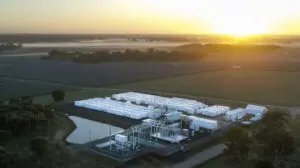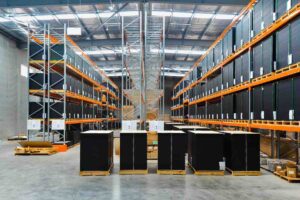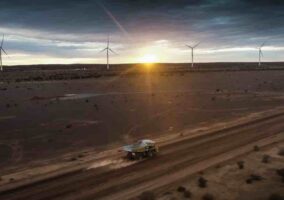Researchers behind machine learning technology developed to boost the accuracy of five-minute ahead renewable energy generation forecasts say they have achieved a 45% improvement in customer power output predictions.
The collaboration between Monash University’s Grid Innovation Hub, Worley and Palisade Energy has been working to more accurately predict production from wind and solar power resources to better integrate them into the national electricity grid.
The Australian Renewable Energy Agency-funded project, knows as PowerPredict, launched in October 2018, and set out to provide wind and solar power generators with more accurate and reliable five-minute ahead self-forecasting tools.
The forecasting models use machine learning algorithms to draw on supervisory control and data acquisition (SCADA) data feeds from generators, in this case trials used the 130MW Waterloo wind farm in South Australia and the 11MW Ross River solar farm (RRSF) in Queensland.
A project update on Tuesday said the $1 million project demonstrated that considerable improvements could be made to forecasting accuracy for both wind and solar farms, and that the technology could be rolled out across Australia – although more research was needed on the solar side.
The Monash-led team said the key benefits included increased renewable energy penetration in the grid due to improved dispatchability of solar and wind power, and a reduction in Frequency Control Ancillary Services (FCAS) payments by generators resulting from the failure to meet forecast targets.
“Our forecasting solution provides immediate value to our existing renewables customers as they target lower FCAS charges,” said Denis Marshment, global vice president of data science customer solutions at Worley.
“And with PowerPredict officially launched, renewable generators in Australia and internationally can benefit from our power forecasting technology.”
Marshment said that natural variations in weather had made it difficult for renewable generators to accurately forecast their short-term power generation levels, which had led to problems with grid stability and project profitability.
“In 2020 alone, inaccurate power predictions cost Australian generators $A210 million,” he said, “so using machine learning algorithms to see five minutes into the future is incredibly valuable. Our forecasting algorithms achieved a 45% improvement in our customers’ power output predictions.”
The development of the machine learning forecasting methodology was led by Dr Christoph Bergmeir, from the Department of Data Science and AI at the Faculty of Information Technology (IT) at Monash University, in collaboration with the Monash Business School‘s Department of Econometrics and Business statistics and was initiated by the Monash Energy Institute’s Grid Innovation Hub.
The team believes the technology has the potential to lower energy prices across the board, and potentially open up avenues for hydro and other forms of renewable energy.
“If renewable generators can lower their causer pays factors, they can produce electricity cheaper, and eventually that saving could be passed on to the customers. It would also make renewables more competitive, which is also a desirable outcome,” said Dr Bergmeir in comments on Tuesday.
“This project shows how industry, represented by our visionary partners Worley, and academia can create real impact together both commercially and in contributing to the global effort to stop climate change,” added associate professor Ariel Liebman, director of the Monash Energy Institute.










